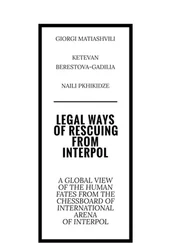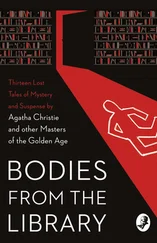MacGregor made a good witness in his own behalf. The money that Mrs. Sparling had paid him had been for medical services. As to the arsenic, he insisted, it could so have been administered via the patent-medicine route.
But Boomhower pulled out all the stops in his address to the jury. He dwelled at length on the fact that Albert, as well as Scyrel, had been found loaded with arsenic. The most damning evidence against Dr. MacGregor and Mrs. Sparling, however, came from Assistant Professor of Hygiene, Richard Pryor, and Professor of Pathology, Alfred Scott Warthin, the University of Michigan pathologists who analyzed Scyrel’s organs. The level of arsenic found could not be explained away by the consumption of patent tonics, they said. In their combined expert opinion, Scyrel Sparling had been poisoned.
Dr. MacGregor had his supporters, too. His father attended court each day. Carrie Sparling, who had also been charged in the conspiracy, said she still believed in the goodness of her family doctor. Carrie Sparling maintained that she sprayed plants with arsenic, explaining the box of poison found in her house. The doctor was not responsible for her loved one’s deaths.
Ray Sparling, Carrie’s last surviving son, defended the good doctor, testifying that the brothers changed the beneficiary to Carrie Sparling on each of their life insurance policies of their own volition. They had wanted to ensure their mother would be properly cared for in the event that they passed away before she did. When Prosecutor Boomhower asked the surly young man how many times Dr. MacGregor frequented the Sparling farm, Ray smartly stated, “More than a half-dozen and less than three thousand.
The doctor’s wife, Ida MacGregor, took the stand on behalf of the defense. She proved to be a valuable witness, testifying with righteous honesty. Though she couldn’t change the facts, Ida MacGregor did testify to the relationship in question between the Sparling family and the MacGregors. The families exchanged Christmas gifts and took turns entertaining in each other’s homes. The Sparling boys made themselves at home when visiting the MacGregor’s, and Ida helped Carrie in any way she could during the Sparling’s harvest season. If anything improper had been going on between Dr. MacGregor and Mrs. Sparling, it became evident to the jury that Ida MacGregor had been clueless, or didn’t care.
When Dr. MacGregor took the stand, he faced a grueling five days of questioning with an answer for everything, though his statements contradicted the testimony of Drs. Conboy, Herrington and Holdship as well as the county coroner and the sheriff.
Dr. MacGregor explained that Mrs. Sparling’s eye ailments required multiple visits to the farm. The endorsement by Mrs. Sparling on Albert’s insurance proceeds merely paid off the Sparling debt owed to the doctor. All eyes in the court were on his wife, Ida, when the doctor testified nothing improper had been going on between him and Mrs. Sparling. Ida, noticeably relieved, sat a little straighter.
In all, over 100 witnesses on behalf of either side took the stand to tell their story. Jury selection had begun on April 2, with testimony given between May 1 and June 6. At that point, the Sparling murder trial had been the longest criminal case in the state of Michigan.
At 12:15 p.m., June 8, the jury sent word to the judge; they had arrived at a unanimous vote. Robert Bowman, foreman of the jury, rose to give Judge Watson Beach their verdict:
“We find Dr. Robert A. MacGregor guilty as charged of murder in the first degree; of murdering Scyrel Sparling by arsenical poisoning.”
While the courtroom erupted, Dr. MacGregor sat expressionless and strangely quiet. Carrie Sparling, however, had received a mistrial. And charges against her were immediately dropped.
Judge Beach sentenced Dr. MacGregor to life imprisonment at Michigan’s state prison in Jackson. Nine weeks had passed since the beginning of jury selection. The Sparling murder case was finally over.
Maybe.
A mob had all but gathered at the Bad Axe depot expecting to see Dr. MacGregor off to prison. Sheriff McAuley anticipated as much, and made prior plans to transport the prisoner to Elkton, expecting to avoid a riot. To his surprise, word had spread to all corners of Huron County and an even bigger crowd had gathered at the Elkton depot than the one that patiently waited to catch a glimpse of the no-good doctor at the depot in Bad Axe. Sheriff McAuley, to his credit, safely escorted the prisoner to his new cell in Jackson.
By July, however, word came back to Huron County that Dr. MacGregor had gained employment within the prison confines, serving as an assistant to the prison physician. He continued to profess his innocence and vowed to work toward redeeming his freedom.
In December of 1912, Dr. MacGregor’s attorney requested a new trial. New evidence supposedly came to light in the form of a written statement by a Mr. J.W. Douglas of Bingham. In the statement, Douglas alleged Scyrel had consumed dangerous amounts of patent tonics. Douglas saw a bottle fall from Scyrel’s coat pocket, the bottle filled with an arsenic concoction.
Carrie Sparling, no doubt still carrying a torch for Doc MacGregor, took her surviving son, Ray, and moved far away. The State Supreme Court turned down MacGregor’s appeal on the grounds that there were not, as the physician was claiming, any legal flaws in the evidence presented against him at the trial.
The Doc became a trusty in prison, then, of all things, the prison doctor. He would have a bad time occasionally when, in prescribing something for a sick prisoner, the con would squint at him and ask,
“You sure there ain’t any arsenic in this stuff, Doc?” But aside from that, MacGregor seemed to be quite happy with his prison work. And the inmates developed a genuine affection for him.
But yet, the strange case of Dr. MacGregor just wouldn’t die.
MacGregor had been in prison almost four years, sending out hundreds of letters protesting his innocence. One day he dropped a long handwritten letter to Governor Woodbridge Ferris.
Ferris had a special interest in medicine and the health of his constituents. During his term of office, a farm colony for epileptics was established in Michigan, as well as the Central Michigan Tuberculosis Sanatorium. He was popular and received the nickname, The Good Gray Governor. Because of MacGregor’s fine work as prison doctor, The Good Gray Governor became interested in Dr. MacGregor’s case and questioned several of the jurors.
Two jurors informed the Governor that they would never have convicted MacGregor of the murder of Scyrel had not Boomhower indicated to them that MacGregor had poisoned Albert, too, something for which no one had ever been convicted. The Governor wondered how the Supreme Court had approved such a verdict. He decided to review the whole case. When he did, and when his assistants conducted a series of interviews around Ubly and Bad Axe, he found himself seeing the case in a new light.
So one day in 1916 Ferris phoned the prison at Jackson and asked the warden to send Dr. MacGregor to his office. Without an escort. When MacGregor arrived in the state house, he received a full pardon. Governor Ferris would only said publicly that he had, “uncovered new evidence,” exonerating the doctor. But he would never said what it was.
Then came the most curious turn of all.
Released, a free man, MacGregor found he didn’t have a single friend in the outside world other than his wife Ida, who was still faithfully waiting for him when he received his pardon.
But he had no patients, and people cast suspicious glances at him on the street. Carrie was long gone. He moved up to his old home region in Ontario but quickly discovered that the tale of adultery and murder that he had starred in down in the U.S. had followed him there.
Читать дальше












